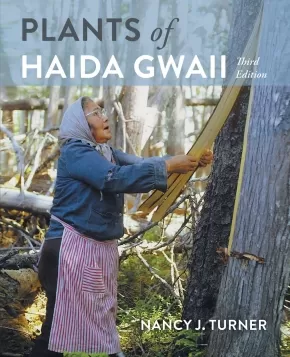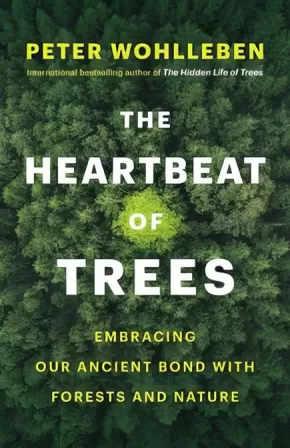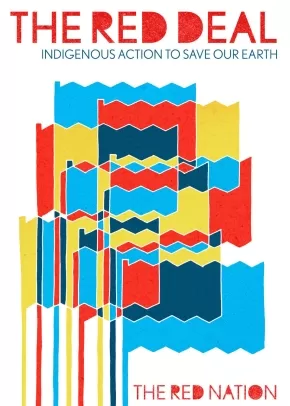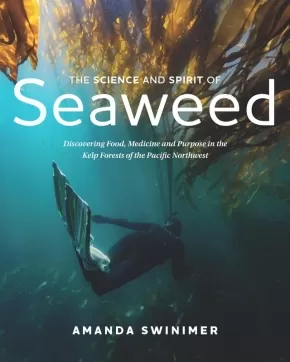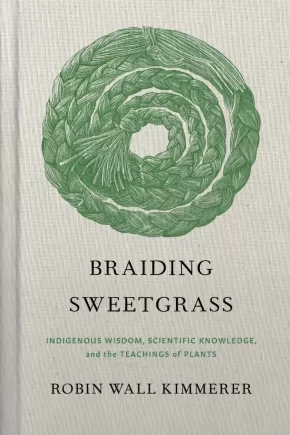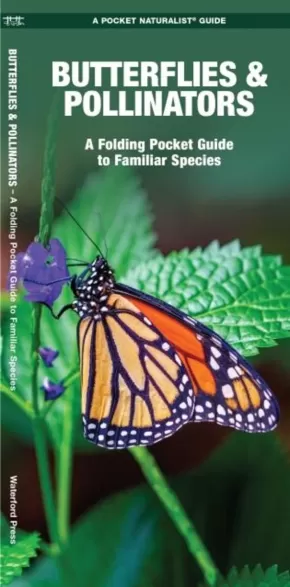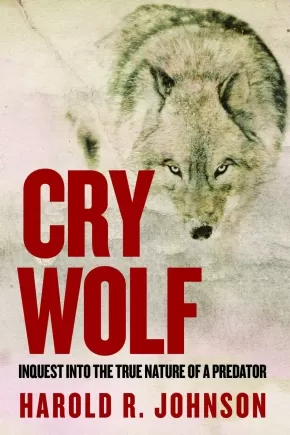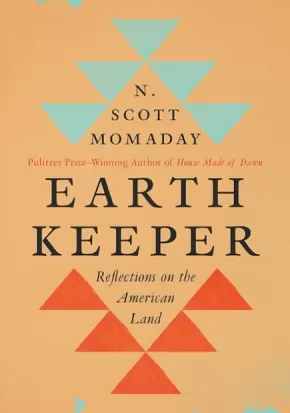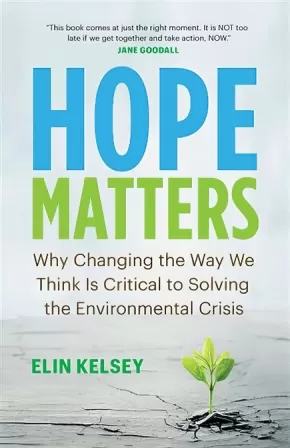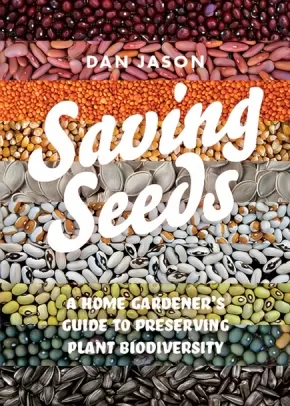Nature
Synopsis:
For many thousands of years the lands and waters of Haida Gwaii have been home to the Haida. Plants of Haida Gwaii, written with the cooperation and collaboration of Haida knowledge holders and botanical experts, is a detailed and insightful record of the traditional uses of over 150 species of native plants. Moreover, it explains the systems of knowledge and understanding that enabled the Haida to use the resources of their islands sustainably from one generation to the next over millennia.
The Haida names of these plants indicate their importance, as do the many narratives featuring them. From the ts’uu—massive western red-cedars—of the forests which provide wood used for canoes, house posts, poles and boxes, and bark carefully harvested for weaving mats, baskets and hats, to the ngaal—tough, resilient fronds of giant kelp—used to harvest herring eggs, the botanical species used by the Haida are found from the ocean to the mountain tops, and are as important today as ever before. With over 250 photographs and illustrations, this book is both beautiful and informative.
Additional Information
272 pages | 7.50" x 9.25"
Authenticity Note: As there are contributions from Haida knowledge holders, this work has been labelled as containing authentic Indigenous text. It is up to readers to determine if this work is authentic for their purposes.
Synopsis:
A powerful return to the forest, where trees have heartbeats and roots are like brains that extend underground. Where the color green calms us, and the forest sharpens our senses.
In The Heartbeat of Trees, renowned forester Peter Wohlleben draws on new scientific discoveries to show how humans are deeply connected to the natural world.In an era of cell phone addiction, climate change, and urban life, many of us fear we’ve lost our connection to nature—but Peter Wohlleben is convinced that age-old ties linking humans to the forest remain alive and intact.
Drawing on science and cutting-edge research, The Heartbeat of Trees reveals the profound interactions humans can have with nature, exploring:
- the language of the forest
- the consciousness of plants
- and the eroding boundary between flora and fauna.
A perfect book to take with you into the woods, The Heartbeat of Trees shares how to see, feel, smell, hear, and even taste the forest.
Peter Wohlleben, renowned for his ability to write about trees in an engaging and moving way, reveals a wondrous cosmos where humans are a part of nature, and where conservation and environmental activism is not just about saving trees—it’s about saving ourselves, too.
Reviews
“As human beings, we’re desperate to feel that we’re not alone in the universe. And yet we are surrounded by an ongoing conversation that we can sense if, as Peter Wohlleben so movingly prescribes, we listen to the heartbeat of all life.” —Richard Louv, author of Our Wild Calling and Last Child in the Woods
“Astonishment after astonishment—that is the great gift of The Heartbeat of Trees. It is both a celebration of the wonders of trees, and a howl of outrage at how recklessly we profane them.” —Kathleen Dean Moore, author of Earth’s Wild Music
“As Peter Wohlleben reminds us in The Heartbeat of Trees, trees are the vocabulary of nature as forests are the brainbank of a living planet. This was the codex of the ancient world, and it must be the fine focus of our future.” —Dr. Diana Beresford-Kroeger, author of To Speak for the Trees and The Global Forest
Additional Information
264 pages | 5.50" x 8.50" | Hardcover
Synopsis:
When the Red Nation released their call for a Red Deal, it generated coverage in places from Teen Vogue to Jacobin to the New Republic, was endorsed by the DSA, and has galvanized organizing and action. Now, in response to popular demand, the Red Nation expands their original statement filling in the histories and ideas that formed it and forwarding an even more powerful case for the actions it demands.
One-part visionary platform, one-part practical toolkit, the Red Deal is a platform that encompasses everyone, including non-Indigenous comrades and relatives who live on Indigenous land. We—Indigenous, Black and people of color, women and trans folks, migrants, and working people—did not create this disaster, but we have inherited it. We have barely a decade to turn back the tide of climate disaster. It is time to reclaim the life and destiny that has been stolen from us and riseup together to confront this challenge and build a world where all life can thrive. Only mass movements can do what the moment demands. Politicians may or may not follow--it is up to them--but we will design, build, and lead this movement with or without them.
The Red Deal is a call for action beyond the scope of the US colonial state. It’s a program for Indigenous liberation, life, and land—an affirmation that colonialism and capitalism must be overturned for this planet to be habitable for human and other-than-human relatives to live dignified lives. The Red Deal is not a response to the Green New Deal, or a “bargain” with the elite and powerful. It’s a deal with the humble people of the earth; a pact that we shall strive for peace and justice and a declaration that movements for justice must come from below and to the left.
Reviews
“The Red Nation has given us The Red Deal, an Indigenous Peoples’ world view and practice that leads to profound changes in existing human relations. Five hundred years of European colonialism, which produced capitalist economic and social relations, has nearly destroyed life itself. Technology can be marshaled to reverse this death march, but it will require a vision for the future and a path to follow to arrive there, and that is what The Red Deal provides.”—Roxanne Dunbar-Ortiz, author of An Indigenous Peoples’ History of the United States
"The Red Deal is an incendiary and necessary compilation. With momentum for a Green New Deal mounting, the humble and powerful organizers of The Red Nation remind us that a Green New Deal must also be Red—socialist, committed to class struggle, internationalist in orientation, and opposed to the settler-colonial theft of Indigenous lands and resources. Redistribution also requires reparations and land back. The Red Deal is a profound call to action for us all."—Harsha Walia, author of Undoing Border Imperialism and Border and Rule: Global Migration, Capitalism, and the Rise of Racist Nationalism
“We really need The Red Deal because it forces open a critical conversation on how Land Back can be a platform for mass mobilization and collective struggle. The Red Deal poignantly argues that if we do not foreground decolonization and Indigenous liberation in climate justice strategies such as the Green New Deal, we will reproduce the violence of the original New Deal that dammed life-giving rivers and further dispossessed Indigenous peoples of their lands. Strategically, The Red Deal shows how, if we understand green infrastructure and economic restructuring as anticolonial struggle, as well as an anticapitalist, we can move from reforms that deny Indigenous jurisdiction towards just coalitions for repossession that radically rethink environmental policy and land protection without sacrificing Indigenous life and relations.”—Shiri Pasternak, author of Grounded Authority: The Algonquins of Barriere Lake Against the State
“The Red Deal asserts that the fight for climate justice must center Native people when it comes to the issues that disproportionately impact Native communities, but it also communicates what the Green New Deal does not — namely, that public lands are stolen lands and climate change is significantly caused by just a few industries, which the government has at worst neglected to hold accountable and at best assisted in their efforts to mine the earth for resources in a move that put profits over people.” —Teen Vogue
“For the Red Nation, living and being interdependent with Mother Nature is explicitly anticapitalist. An ethos merely hinted at in the Green New Deal, The Red Deal understands that capitalism fundamentally protects wealth, not life”—The Politic
“The Red Nation also names Black abolitionists as an inspiration for the Red Deal, citing the links between mass incarceration and detention and climate change. They further note that police departments, prisons, and the U.S. military receive billions of taxpayer dollars annually while doing irreparable harm to Native Americans, Black people, and the Earth.” —Essence
Educator Information
Excerpt from the book:
The Red Deal begins with the oldest yet often forgotten struggle on this continent: ending the occupation. While usually erased from the history of this nation, settler colonial occupation has fundamentally shaped the development of the United States and indeed the world that it dominates economically and politically. Ending the occupation links those of us in the seat of empire with those who face its weapons, soldiers, and policies around the world. Together we share the common enemy of US imperialism, and Indigenous people here have fought against it since the first settlers began to occupy our lands by force. It is important to remember that the very first act of US imperialism was the military and settler incursions on Indigenous land as the fledgling colonies expanded westward. This is why we begin with ending the occupation.
The struggle against occupation on this continent has remained strong throughout history and continues to this day. We’ve seen this in the global uprisings led by Black relatives who have been resisting the colonization of Africa and the enslavement and oppression of African people stolen to work on this continent for centuries. The uprisings during the summer of 2020, even with the global COVID-19 pandemic, built upon the decades of Black resistance to police violence and the everyday brutality of American society towards Black people, and exploded into some of the largest mobilizations in US history. The spread of uprisings throughout cities across the country was also marked by the sharpening of tactics and clarity of the roots of the issues, with images of burnt down police precincts and flipped cop cars evoking memories of Black and Indigenous resistance to slave plantations and frontier forts. Calls for abolition of police and prisons arose with renewed volume, stretching forward from a long history of abolitionist struggle.
It is important that we continue nurturing these histories and movements of struggle against occupation on these lands and continue to build relationships with others globally who face the violence of occupation. We begin with addressing those things that act as obstacles to our collective liberation: the prisons and detention centers filled with our family members; the police officers and prison guards who stand between us and the capitalist interests they defend; and the military, police, and vigilantes who murder our relatives. As we know, colonial occupation is upheld by constant threats of violence and in many instances, actual violence. It is therefore no surprise that these obstacles to our life and wellbeing that employ violence in order to maintain the occupation, receive the largest proportions of resources by the US settler state. We seek to dismantle these institutions that get in our way of living good lives, and we aim to divert resources away from them through divestment.
This is just the first step, though. It is not enough to be against any one thing, even something as big, evil, and all-encompassing as colonial occupation. Ending the occupation gives us the space to breathe and envision other possibilities that we are for, and we must be clear about what we are for. We are for Indigenous life, for the life of all human and other-than-human beings. And in order to live good lives, we must heal ourselves from the destruction caused by colonialism and capitalism by stopping what harms us and desecrates our land and begin to build what will sustain us.
Additional Information
144 pages | 5.00" x 7.00" | b&w illustrations
Authenticity Note: The Red Nation is a coalition of Native and non-Native activists, educators, students, and community organizers advocating Native liberation. The Red Deal was written collectively by members of the Red Nation and the allied movements and community members who comprised the Red Deal coalition. Everyone from youth to elders; from knowledge keepers to farmers contributed to the creation of The Red Deal. It's up to readers to determine if this title works as an authentic resource for their purposes
Synopsis:
Sustainable Pacific Northwest-based seaweed harvester Amanda Swinimer describes the ecology, culinary uses, evidence-based health benefits and climate change-resisting potential of seaweed and shares highlights from her remarkable life beneath the waves.
Related to the most ancient living organisms on earth, seaweeds are incredible and unique life forms, sharing qualities with both plants and animals, as well as fungi. They have been prized as a nutrient-dense food source for millennia and contain essential vitamins, minerals and fatty acids, protein and fibre as well as biologically active compounds not found anywhere else in nature. Seaweeds are also a source for innovations combating climate change due in part to their ability to absorb massive quantities of carbon dioxide.
Based in the Pacific Northwest, home to the greatest cold-water seaweed diversity in the world, Amanda Swinimer has made her living from the sustainable harvest of seaweeds for over two decades. In The Science and Spirit of Seaweed, Swinimer reflects on the journey that led to her successful seaweed harvesting business and provides identification information, ecologically sound harvesting techniques, traditional medicinal application and evidence-based health information for more than twenty varieties of seaweeds commonly found from California to Alaska. She also includes notes on culinary and skin-care uses for several types of seaweeds.
Complemented by vibrant underwater photography, beautiful illustrations and chef-inspired recipes, this volume richly conveys the benefits and wonder of living in harmony with the ocean. It will be a welcome resource to beachcombers, foragers and anyone fascinated by the marvels of the natural world.
Reviews
"This beautiful book will appeal to poets and photographers as surely as it will to scientists, dreamers, harvesters and beachwalkers–every page opening a little window to the soul of the sea and all that dwells within. A timely salute to the synergy between man, ocean, plant, animal, place, spirit and science." — Prannie Rhatigan, author of Irish Seaweed Kitchen, July 2021
"This tour through Amanda Swinimer’s Mermaid Garden ebbs and flows through seaweed fact and the author’s fantasies and reminiscences, punctuated by Chris Adair’s surreal photos of Amanda suspended mid-water. Red, green and brown seaweeds are described with culinary, health and spa anecdotes. Thirty pages are dedicated to "Seaweed & Health," where the promise of seaweed in the treatment and prevention of diseases, many associated with aging, is explored (this section is neatly referenced). Fitting to Amanda’s sprinkling of ecological concern throughout the book, is the section on "Algae: A Global Perspective." Here we glimpse the role of seaweeds in moderating our abused environment and being the prime producer energizing the coastal ecosystem. The recipes are a pleasure. They are original. Many are provided by featured chefs. Swinimer has created a delightful, readable, informative and richly illustrated resource on seaweeds that I highly recommend." — Louis Druehl, author of Pacific Seaweeds: A Guide to Common Seaweeds of the West Coast, July 2021
"This beautifully written book is an irresistible and unique fusion of practical field guide, personal memoir and warm wisdom of how to live well in a home place. A wonderful ramble through the world of seaweeds from basic identification and natural science to culinary uses and medicine, Amanda’s creation brings us into her sphere by melding science, love and reverence in an inspiring ode to these humble but magnificent species." — Fiona Hamersley Chambers, ethnobotanist and owner of Metchosin Farm, July 2021
Additional Information
256 pages | 8.00" x 10.00" | 300 photos | Paperback
Synopsis:
Crabs can be found in abundance along the shorelines from Oregon to BC, burrowed under sand, soil and rocks. Keep this portable field guide handy on trips to the seashore to identify over forty species of crabs and hermit crabs in all shapes and sizes. Discover the differences between the Butterfly Crab and the Puget Sound King Crab and learn how to distinguish between male and female crabs. With full-colour photographs featuring both dorsal and ventral views, and accompanied by descriptive text for easy identification, A Field Guide to Crabs of the Pacific Northwest is an ideal companion for curious beachgoers of all ages.
Additional Information
2 pages | 37.00" x 9.00"
Synopsis:
From dinosaur bones to petrified wood and from primordial seashells to archaic oddballs, this handy field guide makes identification of fossils a cinch. Learn how to identify a fossil and discover the most up-to-date tips on where and when to hunt for them. Featuring gorgeous full-coloured photos and paired with short and informative descriptions, this field guide is suitable for fossil enthusiasts of all ages and skill levels. Lightweight and pocket-sized for convenience, A Field Guide to Fossils is easy to grab and toss into any fossil lover’s backpack on their next adventure.
Additional Information
2 pages | 37.00" x 9.00" | 65 colour photographs | Pamphlet
Synopsis:
Updated with a new introduction from Robin Wall Kimmerer, the special edition of Braiding Sweetgrass celebrates the book as an object of meaning that will last the ages. Beautifully bound with a new cover featuring an engraving by Tony Drehfal, this edition includes a bookmark ribbon, a deckled edge, and five brilliantly colored illustrations by artist Nate Christopherson. In increasingly dark times, we honor the experience that more than 350,000 readers in North America have cherished about the book—gentle, simple, tactile, beautiful, even sacred—and offer an edition that will inspire readers to gift it again and again, spreading the word about scientific knowledge, indigenous wisdom, and the teachings of plants.
As a botanist, Robin Wall Kimmerer has been trained to ask questions of nature with the tools of science. As a member of the Citizen Potawatomi Nation, she embraces the notion that plants and animals are our oldest teachers. In Braiding Sweetgrass, Kimmerer brings these two lenses of knowledge together to take us on “a journey that is every bit as mythic as it is scientific, as sacred as it is historical, as clever as it is wise” (Elizabeth Gilbert).
Drawing on her life as an indigenous scientist, and as a woman, Kimmerer shows how other living beings—asters and goldenrod, strawberries and squash, salamanders, algae, and sweetgrass—offer us gifts and lessons, even if we've forgotten how to hear their voices. In reflections that range from the creation of Turtle Island to the forces that threaten its flourishing today, she circles toward a central argument: that the awakening of ecological consciousness requires the acknowledgment and celebration of our reciprocal relationship with the rest of the living world. For only when we can hear the languages of other beings will we be capable of understanding the generosity of the earth, and learn to give our own gifts in return.
Educator Information
Includes an updated introduction from the author.
Additional Information
456 pages | 5.50" x 8.50" | Hardcover
Synopsis:
Some of the most vibrant colors and patterns in the Animal Kingdom are found among butterflies. Gawdy swallowtails, exquisite gossamer-wings, and a multitude of eye-catching brushfoots are particular standouts, though plenty of whites, sulphurs, metalmarks, and skippers are also adorned with splendid markings. Flowering plants across North America attract some 700 butterfly species as well as thousands of moths, bees, wasps, flies, and beetles, not to mention some hummingbirds and bats. This portable reference is a handy tool for those wishing to deepen their understanding of butterflies and other colorful pollinators. It features beautiful illustrations of 70 familiar butterflies and moths as well as some especially common larvae and pupae. Also included are notes on life cycles and other common pollinators. Laminated for durability, this lightweight, 12-panel folding pocket guide is a terrific resource for educators, learners, naturalists, and gardeners.
Additional Information
12 pages | 4.10" x 8.35"
Synopsis:
“Required reading for anyone invested in our shared future with these powerful and complex creatures. ” —John Vaillant, author of The Tiger and The Golden Spruce
Growing up on a northern trap line, Harold Johnson was taught to keep his distance from wolves. For decades, wolves did the same for humans. But now this seems to be changing. In 2005, twenty-two-year-old Kenton Carnegie was killed in a wolf attack near his work camp. Part story, part forensic analysis, Cry Wolf examines this and other attacks, showing how we fail to take this apex predator seriously at our own peril.
Reviews
“A crucial and timely examination of our shifting relationship to the land in general and the Canis lupus in particular. ” —Eden Robinson, author of Son of a Trickster
“Insightful . . . . Johnson eloquently argues that Traditional Ecological Knowledge and the wisdom of Indigenous people can help us better understand the true nature of predators such as wolves. ” —Cristina Eisenberg, PhD, author of The Wolf’s Tooth and The Carnivore Way
Additional Information
160 pages | 5.00" x 7.50"
Synopsis:
A magnificent testament to the earth, from Pulitzer Prize-winning novelist and poet N. Scott Momaday.
One of the most distinguished voices in American letters, N. Scott Momaday has devoted much of his life to celebrating and preserving Native American culture, especially its oral tradition. A member of the Kiowa tribe who was born and grew up on Indian reservations throughout the Southwest, Momaday has an intimate connection to the land he knows well and loves deeply.
In Earth Keeper: Reflections on the American Land, he reflects on his native ground and its influence on his people. “When I think about my life and the lives of my ancestors, I am inevitably led to the conviction that I, and they, belong to the American land. This is a declaration of belonging. And it is an offering to the earth.” he writes.
Momaday recalls stories of his childhood, stories that have been passed down through generations, stories that reveal a profound and sacred connection to the American landscape and a reverence for the natural world.
In this moving and lyrical work, he offers an homage and a warning. Momaday reminds us that the Earth is a sacred place of wonder and beauty; a source of strength and healing that must be protected before it’s too late. As he so eloquently yet simply expresses, we must all be keepers of the Earth.
Reviews
“Poets and storytellers have always reminded us of our spiritual connections to the land and the world around us — passed along through dreams, stories, memories, and mythologies. Scott Momaday skillfully continues this tradition in Earth Keeper, from which we can all learn and benefit.”— Robert Redford
“Earth Keeper is a prayer for continuity in these days of uncertainty. I cannot tell you why I loved this book, I can only tell you I wept my way through it. Each page brought me closer to myself, a self I had lost in the pandemic. We need Scott Momaday's calm, clear prose and stories. Words are medicine. There is wisdom in sharing what one knows, especially at a time when we know so little. ‘Let me say my heart,’ he says. And he does.”— Terry Tempest Williams, author of Erosion: Essays of Undoing
"Dazzling. . . . In glittering prose, Momaday recalls stories passed down through generations, illuminating the earth as a sacrosanct place of wonder and abundance. At once a celebration and a warning, Earth Keeper is an impassioned defense of all that our endangered planet stands to lose."— Esquire
“Wonder abounds in these pages. . . . Short chapters of prose that read almost like prayers to the natural world.”— Kirkus Reviews
“Short but satisfying. . . . Using lyrical, heartfelt language, [Momaday] looks back on a life lived close to nature, and on the joy that natural wonders have given him. . . . At a time when bad news is in plentiful supply, readers will find Momaday’s words refreshing and comforting in their sincerity.”— Publishers Weekly
"A profound reflection on humanity's relationship with its terrestrial home, the planet Earth."— Booklist
“A collection of short essays as multilayered and majestic as the landscape that has been present in everything that Momaday has written. . . . [A] poetic love letter to the Earth.”— Minneapolis Star Tribune
Educator Information
From the Author's Note: "This book is a very personal account, a kind of spiritual autobiography."
Additional Information
80 pages | 5.00" x 7.12"
Synopsis:
Fears about climate change are fueling an epidemic of despair across the world: adults worry about their children’s future; thirty-somethings question whether they should have kids or not; and many young people honestly believe they have no future at all.
In the face of extreme eco-anxiety, scholar and award-winning author Elin Kelsey argues that our hopelessness—while an understandable reaction—is hampering our ability to address the very real problems we face. Kelsey offers a powerful solution: hope itself.
Hope Matters boldly breaks through the narrative of doom and gloom to show why evidence-based hope, not fear, is our most powerful tool for change. Kelsey shares real-life examples of positive climate news that reveal the power of our mindsets to shape reality, the resilience of nature, and the transformative possibilities of individual and collective action. And she demonstrates how we can build on positive trends to work toward a sustainable and just future, before it’s too late.
Reviews
“Like Elin, I have met countless people who have lost hope in many countries. Most were apathetic. Some were angry. Others depressed. Because, they told me, their future has been compromised and there was nothing they could do about it. But there is something they can do. This book comes at just the right moment. It brings a message of hope to help curb the negativity, the gloom and doom we are confronted with each day. It is NOT too late if we get together and take action, NOW.” —Jane Goodall, PhD, DBE, founder of the Jane Goodall Institute and UN Messenger of Peace
“Elin Kelsey is that rare creature—perhaps unique?—who writes with the acuity of a scientist, the grace of a poet, and the heart of a mother. After decades of fighting the good fight on behalf of her beloved oceans and their wildlife, she realizes that our conversations about environmentalism are often thwarted by overwhelming doubt and despair. Hope Matters is a clarion call to reawaken our spirits and renew our efforts, filled with engaging success stories, lyrical nature writing, and actionable ideas. 'We can recognize the urgency of the problem and be inspired by the resilience of other species,' Kelsey writes. This is a book to inspire resilience: for our children, for our leaders, for ourselves.”— Anne Nelson, Fellow, Arnold A. Saltzman Institute, Columbia University School for International and Public Affairs, and author of Suzanne’s Children: A Daring Rescue in Nazi Paris
“In a time when so much of the news on biodiversity is depressing, Dr. Elin Kelsey reminds us that there are good reasons to be hopeful. This book is a tonic in hard times.”—Claudia Dreifus, instructor in Columbia University’s Masters in Sustainability Management program and author of Scientific Conversations: Interviews on Science from the New York Times
Additional Information
240 pages | 5.50" x 8.50"
Synopsis:
How can social movements help bring about large-scale systems change? This is the question Jen Gobby sets out to answer in More Powerful Together. As an activist, Gobby has been actively involved with climate justice, anti-pipeline, and Indigenous land defense movements in Canada for many years. As a researcher, she has sat down with folks from these movements and asked them to reflect on their experiences with movement building. Bringing their incredibly poignant insights into dialogue with scholarly and activist literature on transformation, Gobby weaves together a powerful story about how change happens.
In reflecting on what’s working and what’s not working in these movements, taking inventory of the obstacles hindering efforts, and imagining the strategies for building a powerful movement of movements, a common theme emerges: relationships are crucial to building movements strong enough to transform systems. Indigenous scholarship, ecological principles, and activist reflections all converge on the insight that the means and ends of radical transformation is in forging relationships of equality and reciprocity with each other and with the land.
It is through this, Gobby argues, that we become more powerful together.
100% of the royalties made from the sales of this book are being donated to Indigenous Climate Action.
Educator Information
Table of Contents
Acknowledgments
Thinking Together About Changing Everything
The Climate and Inequality Crises in Canada
Understanding the Crises
Envisioning Alternatives
How We Get From Here to There
Taking Stock of Where We Are At and What Stands in Our Way
Overcoming the Barriers and Building More Powerful Movements
“We Get There Together, or We Don’t Get There at All”
Appendix
References
Index
Additional Information
266 pages | 6.00" x 9.00"
Synopsis:
The recipes and traditions found in this book reflect the culture and the knowledge of the Medicine Wheel, featuring 26 edible and medicinal plants that you can gather in nature as Carrie and her grandmother did.
Create a luxurious and natural beauty regime by crafting your own lotions, soaps and teas from all-natural ingredients. From stress-busting teas and bath bombs to skin-smoothing lotions and creams, get vibrant skin and a healthy glow with Carrie’s creations based on her grandmother’s traditional teachings.
"I remember gathering plants and berries with my grandmother while she shared her stories and her deep understanding of traditional plants and their uses. My grandmother healed us with her medicinal plants—everything from pink eye, sore throats, stomach ailments, aches and pains, and infections. She’d make us these beautiful, healing teas." –Carrie
Additional Information
144 pages | 6.00" x 7.75"
Synopsis:
One Earth profiles Black, Indigenous and People of Color who live and work as environmental defenders. Through their individual stories, the book shows that the intersection of environment and ethnicity is an asset to achieving environmental goals. The twenty short biographies introduce readers to diverse activists from all around the world, who are of all ages and ethnicities. From saving ancient trees on the West Coast of Canada, to protecting the Irrawaddy dolphins of India, to uncovering racial inequalities in the food system in the United States, these environmental heroes are celebrated by author and biologist Anuradha Rao, who outlines how they went from being kids who cared about the environment to community leaders in their field. One Earth is full of environmental role models waiting to be found.
Reviews
“Thought-provoking reading for young people figuring out their own contributions. This valuable compilation shows that Earth’s salvation lies in the diversity of its people.”— Kirkus Reviews, starred review
“Rao shines a light on the too often unacknowledged role played by People of Colour in the green movement. This is a book to be celebrated and shared!”— Elizabeth May, former leader of the Green Party of Canada
“One Earth is so important today because it acknowledges the diversity of our environmental defenders and warriors and reminds us that the environment has no borders. Thank you, Anu, for identifying these amazing eco-champions. Their experience and dedication to making sure the environment is our number one priority is an invaluable gift to Canada and the world.”— Winnie Ming Yue Hwo, Senior Public Engagement Specialist, David Suzuki Foundation
Educator Information
Recommended for ages 12+
Contains 20 short biographies of Black, Indigenous and People of Color (BIPOC) in the environmental movement.
Offers a positive approach to environmental issues with a focus on environmental successes.
Written in a readable and accessible voice, One Earth presents diverse role models for youth and readers of all ages.
Keywords / Subjects / Themes: Black, Indigenous, and People of Color (BIPOC), environmentalists, changemakers, conversation, diversity, biographies, #ownvoices.
Text Content Territory Note: This book has received the Indigenous text content territory label because it contains some profiles of Indigenous environmental defenders, but not all people profiled in this work are Indigenous.
Additional Information
208 pages | 6.00" x 8.50"
Synopsis:
Part garden guide, part manifesto, this is an invitation to preserve our dynamic, sustainable food supply -- one seed at a time.
Much of our food comes from seeds. But where do our seeds come from? And where are they going? For much of human history, farmers saved their own seed stocks to ensure a good harvest from year to year. In the mid-twentieth century, governments became involved in seed saving, creating massive seed libraries cataloguing thousands of varieties. This biodiversity has come under attack in recent decades, as corporations have replaced heirloom varieties with genetic engineering and costly trademarks. In such an agricultural climate, saving seeds becomes both a practical act of preservation and powerful act of protest.
Over half of Canadian households grow fruits, herbs, vegetables or flowers for personal use, according to Statistics Canada. And each of these home gardens has the potential to preserve vital biodiversity, if only we would let plants go to seed, harvest and preserve them. Saving Seeds is a clear and winsome introduction to the essentials of seed saving, from seed selection criteria to harvest and storage tips. It also addresses the role of seed-saving communities: local swaps, seed companies, friends and neighbours and even how the Internet can support this time-honoured practice.
In an era of community gardens, farmers markets and renewed interest in heirloom species, Saving Seeds is a timely call to ensure a more secure future for our seeds and ourselves.
Additional Information
96 pages | 5.00" x 7.00" | b&w illustrations

